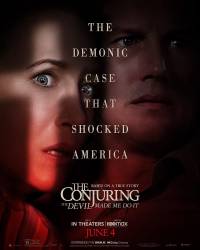
Question: Why didn't the lady who was originally with Mid-Size Sedan decay quicker, and we were able to see her body intact when she hit young Trent in the water?

Question: What exactly happens to a host's body once the symbiote emerges? At the end of Venom, when Venom is threatening the robber, he partially opens his face, and we see Eddie's face. In this movie, when Cletus/Carnage is escaping from prison, guards start shooting at Carnage who then splits open his entire midsection but Cletus is nowhere to be seen.
Answer: The host and symbiote merge fully. So the symbiote can totally disappear into the host and the host can totally disappear into the symbiote. They can also split again, or partially, at will. It just depends on who gets to be the active version at that time.
I am not up to speed with recent Marvel canon, but in the comics it's never been that way? The symbiote can surely slink inside the host (especially Carnage in Kasady's blood), but the humans can't turn into shapeless goo. Comics aside, that sequence from the movie is mind-boggling; I can sorta explain it thinking the symbiote just tore Kasady's torso in half and then reattached it instantly (in other parts of the movie Eddie gets basically stabbed with what would be lethal wounds).
Actually, in the comics it's long been established that Carnage's healing factor is Deadpool-levels of broken. There are numerous moments where Carnage is impaled, crushed, decapitated, has his neck twisted, even grenades blowing up in his jaws and straight up nailed by military missiles... AND HE'S JUST FINE AND WALKS IT OFF LIKE NOTHING HAPPENED. He absolutely could casually tear himself open with no drawback whatsoever.
"Could" tear himself open, does he usually?"Can turn into shapeless goo", has he? One thing is to regenerate the torso, another thing is to manipulate your body parting before the bullets reach you.I don't really see that from the example posted, but my curiosity aside, given we're talking about the movie anyway, I really don't see Kasady depicted as a shapeshifter, and him and the symbiote in this movie are entirely separated at the end (pending a sequel of course).
Also, for Carnage specifically, the human absolutely can turn into shapeless goo. Makes sense, actually, given that the symbiote canonically merged into Kasady's own cells and microscopic DNA, something even Venom and its hosts can't replicate https://2.bp.blogspot.com/9DjIg5e1HwLrwx-lhLjXxlUqzici7xajVTQZMhEHW8a0X9BqdRFE4U6eaBuPKXJgb8zSxkTytpvh=s1600 so the "symbiote-opening-up-the-host-body-with-holes" being a Carnage specific thing isn't surprising at all, in fact, given it's the same body.

Question: When did Martian Manhunter get to Earth, why did he assume Martha Kent's identity, and where is she during Justice League?
Answer: Martian Manhunter is played by Harry Lennix, who also plays General Swanwick, a character who appears in Man of Steel and Batman v Superman (and we can see he transforms back into Swanwick he leaves), revealing that Swanwick was Martian Manhunter the whole time, so the indication is he got to Earth before Man of Steel. He assumed Martha's identity to speak with Lois, specifically to have a heart to heart with her as she is depressed due to Clark's death. Martha is present every other time we see her, when she leaves the Kent home at the beginning and when she reunites with Clark later on. This scene was the only time Martian Manhunter used her identity.

Question: When Dr. Strange separates Peter's spirit from his body how is Peter still able to make his arm move?
Answer: His spider-sense is probably somewhat aware that his astral form has been separated from his physical body, so it is taking over and controlling his movements.
I concur with your answer because while he is separated from his suit you can see the aurora of his spider tingle all around his head.
Answer: I guess I missed something because I thought that suit was made with Stark tech and has nanotech in it. I figured it was the suit keeping the box away and Doctor Strange thought it was Peter.

Question: At the end, General Ross' convoy is nearly to Natasha, intent on arresting her...then we cut to two weeks later, and she's about to embark on a prison breakout. Are we just meant to assume she escaped...somehow? Fought off everyone who was in those about 20 SUVs? Ran for it and somehow got away?
Chosen answer: It was done intentionally that way by the director to be left up to the viewer's imagination. Cate Shortland said "that was intentional, because we wanted to leave the question of how she would get away, rather than allow the audience to get exhausted by another fight." Of course, it's also possible that future films or TV shows will discuss/show her escape. Perhaps she negotiated her way out with information on the Red Dust.
I don't see why she didn't just leave with everyone else. There was no reason for her to stand there and wait. She could have flown off, as well. The convoy was cars, not planes.
Natasha activated her tracker which led Ross to her. The plan was to have Ross and his men arrest Dreykov, but basically things went sideways. Natasha stayed behind to hold Ross and his men off from pursuing the Widows. Presumably, had she left with them, Ross would still be able to track her and everyone would be in danger of being captured.
Until it is explained by one of those future shows, it really can be thought of as a plot hole. The interview, after the quoted bit, goes like this; "We wanted to leave you guys on a high with the question of how did she use her ingenuity? Because she did. And it was probably, I would say, she bargained her way out of that situation. But I don't know." So...the director says she does not know how the hell did she -really - escape that situation, just that she must have done something clever. Hilarious.
Leaving the how unanswered isn't a plot hole, even if writers or directors don't know the how. At best, it's an unexplained Deus ex machina. A plot hole is something that contradicts what's been established for the sake of the plot, but here, nothing was established.
I wouldn't say it's a DEM. Wikipedia; "Deus ex machina is a plot device whereby a seemingly unsolvable problem in a story is suddenly and abruptly resolved by an unexpected and unlikely occurrence."There is no occurrence here. Nothing that we (nor the director.) know of intervened between the two scenes.On the other hand,"Plot hole is a gap or inconsistency in a storyline that goes against the flow of logic established by the story's plot." Natasha's situation is established and then ignored.
Which is why I said it was "unknown." An unknown occurrence happened that resolved the situation that wasn't illogical. However, I wouldn't correct you if you submitted a plot hole mistake, but others might since something not being explained isn't a plot hole.
Yes, sorry, I was splitting hairs as usual; I don't think a DEM can be "unexplained" in the sense of "unknown" because its whole point is that it is the narrative device that gives the story its twist; as absurd as it is (like a literal God appearing out of nowhere fixing things), it must be "something." Here there's nothing; we only have a statement of the director, movie-wise it's not even particularly implied that the resolution was peaceful, since Nat simply says she'll hold them off.

Question: What's with the painting he takes out of the Challenger?
Answer: Van Gogh's "Bedroom in Arles".

Question: Why did the Baroness kill Estella's adoptive mother? Why not just give her money and whatever help she needed?
Answer: The Baroness probably thought that if she gave Estella's adoptive mother money and help that time, she would keep asking for more and more money under threat of revealing the secret that the Baroness was the girl's real mother. Killing her meant one less person who knew her secret and could hold it over her.

Question: Is the Spanish flag seen on the building in Huelva the accurate one used during Franco's regime or the modern one?
Answer: During Franco's reign, 1938 to 1977, the flag (Rojigualda) had a different coat of arms, the Eagle of St. John, with 'Una Libre Grande' inscribed. It changed in 1945 to a bigger eagle, overall covering some of the red bands of the flag, so, as this is 1943, from what one can see, the flag is correct in the film.

Question: How was Bond able to get Madeleine pregnant after the sadistic torture he endured at the hands of Le Chiffre in Casino Royale, where that was supposed to disable his ability to procreate? Also, why did Madeleine insist that her child was not Bond's?
Answer: There's no explanation, but there is much Internet speculation that, without being too graphic, believes Bond's injuries were probably treatable and less extensive than was shown, leaving him fertile. Also, movies often change, minimize, or ignore previous plot points in order to fit the current narrative.

Question: How come Allison wasn't compensated for losing five years of her life for a murder she did not commit?
Answer: The new DNA evidence may have been enough to cast DOUBT on her guilt, result in the court revision, and result in her release, but I don't think anyone else (at least not in the movie) was found guilty of the murder. That is, doubt of her guilt is not in itself proof of her innocence. In fact, Allison played at least an indirect role in the murder by giving the man her gold "Stillwater" necklace and promising him money if he would "get rid" of her roommate. Allison told her dad she didn't want the man to kill her roommate, but her use of the words "get rid of" her roommate doesn't exactly make her innocent. Allison seemed to accept her indirect (at minimum) role and was relieved to be released. In general, provided the courts followed proper procedures in acquiring a conviction, the courts are not liable for so-called "wrongful convictions." Even when the burden of proof is "beyond a REASONABLE doubt", there's always the possibility of SOME doubt. This may not answer everything.

Question: The reporter on the TV says that Bruno Sauls, the owner of Brookfield Boarding Kennels was stabbed 22 times by Arne Johnson. And another victim, Katie was also stabbed 22 times by her best friend, Jessica. Why 22 in particular?
Chosen answer: Maybe just to show the correlation between both cases?

Question: Why does Michael head back to his old house and why does Karen go inside it by herself?
Answer: It was his own personal man cave, he was born and raised there. It was the only place he felt safe and secure. In just about every "Halloween" film he always returned to his home. It belonged to him. I personally believe Karen went there to get a feel for the place, trying to make sense of everything. Why does a normal kid turn into a ruthless killing machine, was it just him or was it the house itself.

Question: Did the Guccis ever own a Klimt painting, were they not in the Netherlands until 1998? Were they not Nazi plunder?
Answer: No.

Question: After a phone call, William tries to take his wife and daughter and leave the town. In the car, his wife asks him why he is a such a hurry to leave, he says "Leaving. That's what they want. So they can destroy my life's work." Who does he refer to and why would "they" try to destroy his life's work?
Answer: He is talking about the Umbrella corporation stealing his work, specifically, the G-Virus, so they can weaponize the virus. If the process goes well, Umbrella will take credit for it, but if the process goes poorly, Umbrella will blame Birkin for the failure, either way, Birkin loses.

Question: Does Maria die at the end of West Side Story?
Answer: No, she doesn't, but Tony is shot and killed.

Answer: Because she was 'freshly' dead when she hit Trent.